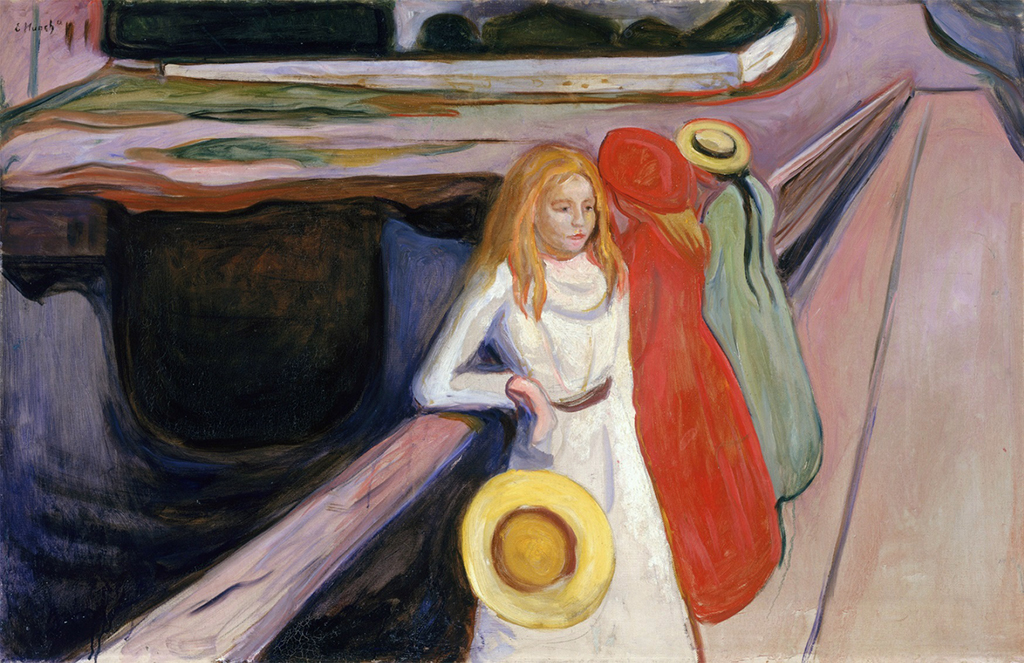This painting is just one of a number of similar artworks from Edvard Munch which capture a group of girls, and later women, looking out from the side of a bridge in Aasgaardsstrand.
Each iteration places the girls in different poses, sometimes with their clothing or hats re-arranged. The angle of the bridge from which he works as well as the elements of the town that we see in the background remain fairly constant throughout and this was just one example of how the artist constantly strove for different iterations of the same theme or content. He would do the same with The Scream, for example, where many different interpretations were produced, even though most are only aware of the most famous one. The version that we find here is perhaps a little different, though, because much of the background is cropped out and the girls are shown in much more detail.
This painting is dated at 1901 and is now under the ownership of the Kunsthalle Hamburg in Germany. Its original Norwegian title was Pikene på broen and it was joined by other paintings in this series such as The Girls on the Bridge from the same year that is in the Munch Museum in Oslo. There was also The Girls on the Bridge and The Women on the Bridge which followed in 1902 and they are all fairly similar in style and composition. Several more would appear in 1903-1905 but he then took a long break until 1927, when a final installment appeared. The series is particularly memorable because of the combination of bright colour, charming girls and also the carefully crafted perspective delivered by Munch. Girls on a Bridge from 1901 was the only one of these paintings to move closer into the girls, helping us to understand their emotions where as in the others our attention is more evenly spread across the whole painting.
The cropped nature of this composition makes the bridge dominate even more, covering the entire right hand side of the piece. The buildings are removed, and three figures are visible. Colour tones are used carefully, with each girl being devoted to one specific tone. The woman nearest has her back to the water and looks reflectively in the opposite direction to her friends. She is all in white, other than a yellow or beige hat and a small brown belt. She leans on the bridge rail wondering about her future. Her friends are in red and green respectively, with their faces covered as they look off into the distance. Perhaps they were more enthusiastic about things at the time and are appreciating the beauty of nature within a care in the world.





